The Boston Terrier is a non-sporting dog breed that hails from the United States. Boston Terriers are a compact, sturdy breed, measuring between 9 and 17 inches tall and weighing from 6 to 25 pounds. These happy-go-lucky pups make great companions and also excel at competitions and obedience training. Here is a list of 10 Boston Terrier facts that uncover what makes these dogs so awesome.
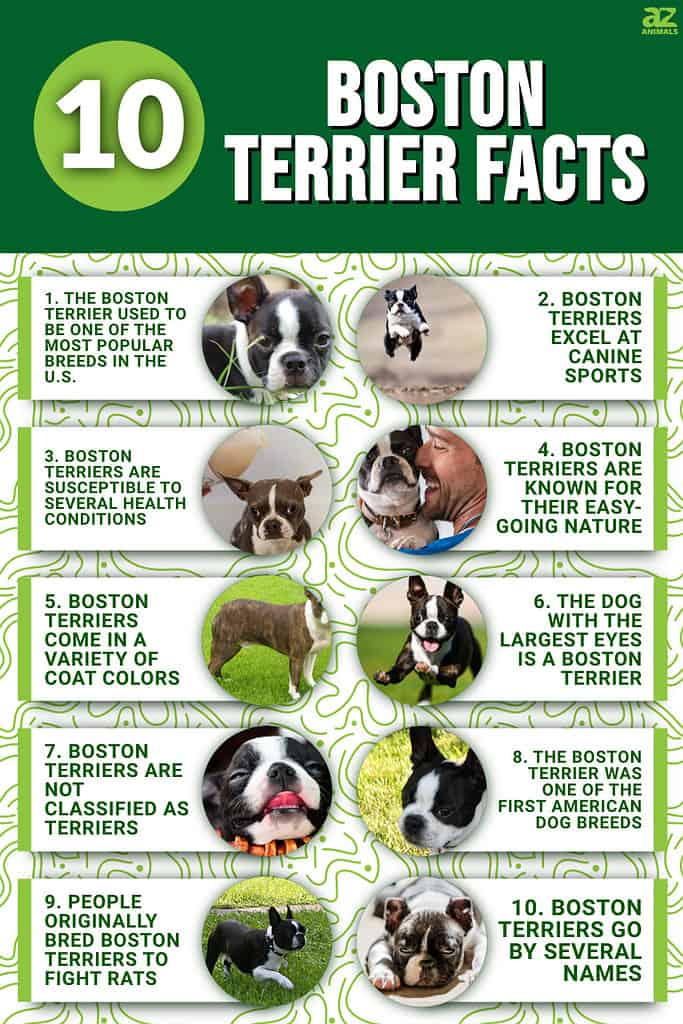
10. Boston Terriers Go By Several Names
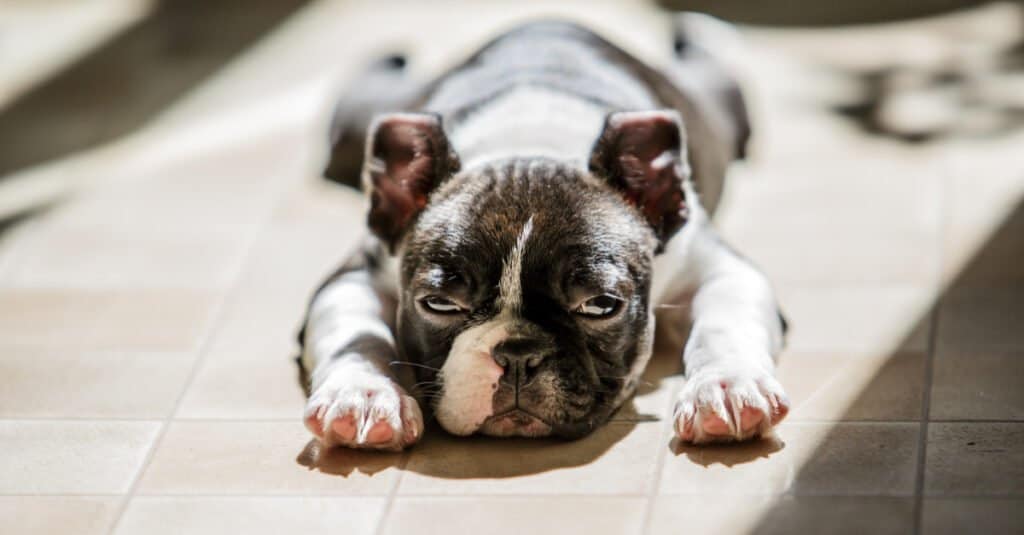
Boston Terrier is also called “American Gentleman.”
©Nailia Schwarz/Shutterstock.com
For the first entry on our Boston Terrier facts list, we’ll dive into the etymology of the breed’s name. It’s not uncommon for dogs to go by several different names, and Boston Terriers are no exception. The breed first became popular in Boston near the end of the 19th century and can trace its lineage to bull and terrier breeds. As a result, it also goes by the name Boston Bull, Boston Bull Terrier, and Boxwood.
Boston Terriers are a distinctly American breed that exhibits a characteristic appearance and idiosyncratic behaviors. Their distinctive black and white markings vaguely resemble tuxedos, and they typically possess a tough but friendly personality. Given their appearance and temperament, some people also refer to Boston Terriers as “American Gentlemen.”
9. People Originally Bred Boston Terriers to Fight Rats

Boston Terriers were originally bred to hunt rats.
©Theo Schneider – Public Domain
Most dog breeds can trace their heritage back to a time when they served a specific purpose. Many breeds were raised to perform certain functions, such as herding livestock, pulling sleds, or protecting property. Over time, breeders highlighted desirable features from different pairs that eventually transformed the breeds in the dogs that we know and love today.
As a group, terriers were originally bred to hunt vermin. Terriers excel at hunting rodents and other pests thanks to their small, wiry frames, gameness, overall fearlessness, and ferocity. It’s, therefore, no surprise that many of the first Boston Terriers were bred to hunt rats in garment factories. Moreover, thanks to their bull heritage, Boston Terriers also excel as fighters, and many of their first breeders raised Boston Terriers to compete in blood sports.
8. The Boston Terrier Was One of the First American Dog Breeds
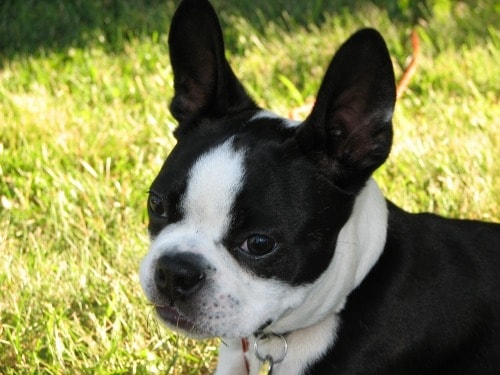
Going back in history, Boston Terriers were among the pioneer U.S native breeds.
©Ltshears – Public Domain
According to our best records, Boston Terriers can trace their history back to around 1875. They first appeared in the Boston area in the 1870s and quickly became established in the city. Around that time, an association known as the American Bull Terrier Club was formed in the city to promote and breed Boston Terriers.
After a few years, the club changed its name to the Boston Terrier Club. In 1893, the club was admitted as a member of the American Kennel Club. At that time, the AKC recognized several breeds, but many of them were European breeds with older histories. As a result, the Boston Terrier is recognized as one of the first US dog breeds. To this day, it remains one of the few distinctly American breeds to originate in the US. It also ranks as the first non-sporting dog breed in the U.S.
7. Boston Terriers Are Not Classified as Terriers

Boston Terriers are not recognized as terriers.
©Various photo/Shutterstock.com
Next up is one of our more head-scratching Boston Terrier facts. Occasionally, animals earn names that defy expectations. For example, fireflies aren’t actually flies but beetles, and koalas aren’t actually bears but marsupials.
Despite their name, Boston Terriers are not actually recognized as terriers. The Boston Terrier breed traces its origin back to a bull and terrier dog named Hooper’s Judge. Judge was bred to a white bulldog named Gyp, and subsequent breeders further refined the breed to get to the modern Boston Terrier we know today. However, the American Kennel Club does not classify the Boston Terrier as a terrier despite its origins. Due to its bulldog and bull ancestry, the Boston Terrier is recognized today as a non-sporting dog breed rather than a terrier.
6. The Dog With the Largest Eyes Is a Boston Terrier

Boston Terriers have large, wide-set eyes.
©Zero Degrees Photography/Shutterstock.com
Boston Terriers possess several distinctive features. In addition to their characteristic coats, you’ll likely recognize them by their compact frame, squarish head, and short muzzle. Additionally, Boston Terriers have noticeably pointed, erect ears and a short corkscrew or curly tail measuring no more than 2 inches long.
That said, prominent eyes are arguably the most noticeable feature of Boston Terriers. Their large, wide-set eyes are set squarely in their skulls, giving them a somewhat shocked appearance. In fact, the dog with the largest eyes in the world happens to be a Boston Terrier named Bruschi. Bruschi’s eyes measure an amazing 28 millimeters in diameter.
5. Boston Terriers Come in a Variety of Coat Colors

Boston Terriers have different coat colors.
©Elf / Creative Commons – Original
The Boston Terrier is also known as the “American Gentleman,” a name that references its most iconic coat, which consists of black and white markings in a pattern resembling a tuxedo. However, Boston Terriers actually come in a variety of coat combinations. In addition to their characteristic white markings, the rest of the coat may look black, brindle, seal, or a combination of all three colors.
Generally speaking, you can classify the markings on a Boston Terrier into one of two categories. Required coats consist of a white chest, white muzzle band, and white band between the eyes. Meanwhile, Desired coats feature the same markings as Required coats, along with a white collar, white markings on the forelegs and rear legs.
4. Boston Terriers Are Known for Their Easy-Going Nature

Boston terriers have a friendly personality.
©iStock.com/Ridofranz
Different dogs enjoy different reputations depending on their prevailing personality. While some have a reputation for acting stubborn, others are relatively easy-going. Meanwhile, while some are difficult to train, others respond well to obedience training.
Generally speaking, owners of Boston Terriers confirm that the breed responds well to training. By and large, Boston Terriers are friendly, stout dogs that want to please their owners. That said, they have a naturally high protective instinct and can act aggressively and territorial around other pets or strangers. This aggression likely stems from their history of fighting and working as ratting dogs. Boston Terriers are typically quiet, bark rarely, and get along well with adults, children, and other pets if properly socialized.
3. Boston Terriers Are Susceptible to Several Health Conditions
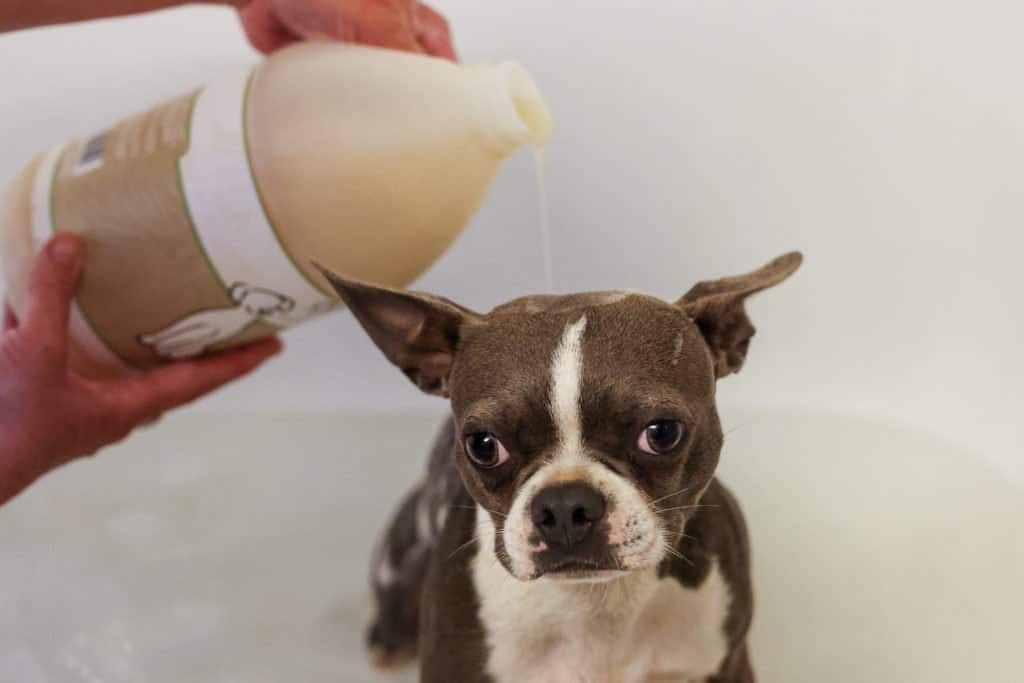
The next entry on our list of Boston Terrier facts is also one of the saddest. Despite their robust and hardy frames, Boston Terriers are susceptible to several health conditions. Some Boston Terriers develop a curvature of the back, likely due to patella issues in the rear legs. Many Boston Terriers also have digestive problems and often have difficulty dealing with really hot or cold temperatures due to their short muzzles.
Additionally, Boston Terriers frequently live with eye problems such as corneal ulcers. Their large eyes and short muzzle also mean they are more likely to suffer injury from particles entering the eyes. Sand, dirt, dust, and other foreign objects can easily irritate or damage their eyes, making preventing eye damage more difficult.
2. Boston Terriers Excel at Canine Sports

Boston Terriers are prominent in canine sports.
©iStock.com/Carmelka
Gone are the days when Boston Terriers were primarily used as ratting dogs and in fighting competitions. Thanks to their easy-going nature, Boston Terriers make great companions, and they now mostly serve simply as house pets. That said, some people continue to take advantage of the breed’s natural physical gifts.
In recent years, Boston Terriers have become quite prominent in the canine sports world. Their strength, durability, and willingness to accept training make them naturally gifted at agility and obedience courses. They are also popular therapy dogs, thanks to their natural friendliness and agreeableness.
1. The Boston Terrier Used to be One of the Most Popular Breeds in the United States
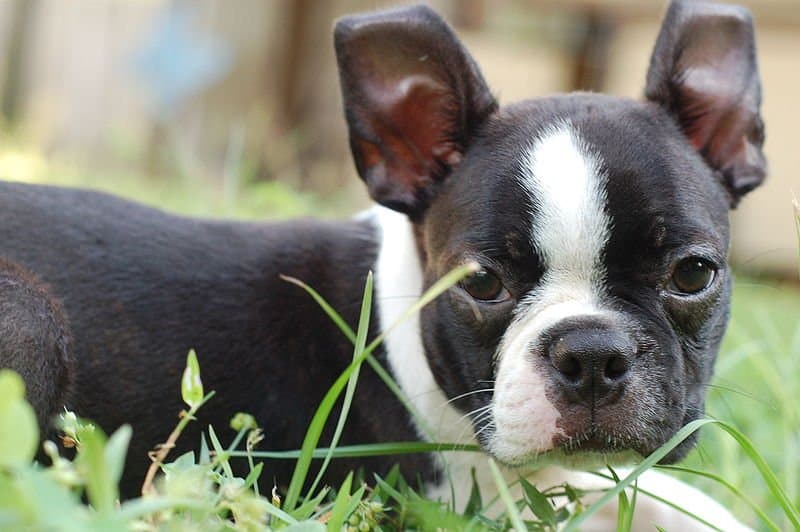
Boston Terriers are popular in the United States.
©Tricia / Creative Commons – Original
As of 2021, the American Kennel Club ranked the Boston Terrier as the 23rd most popular breed in the United States. This is by no means a shabby ranking, given the breed’s history. However, it pales in comparison to the breed’s former popularity. Back at the beginning of the 20th century, the Boston Terrier ranked as the country’s first or second most popular breed. It held this title for decades before eventually falling off in popularity and being replaced by breeds such as Labrador Retrievers and German Shepherds.
The photo featured at the top of this post is © Zero Degrees Photography/Shutterstock.com
Ready to discover the top 10 cutest dog breeds in the entire world?
How about the fastest dogs, the largest dogs and those that are -- quite frankly -- just the kindest dogs on the planet? Each day, AZ Animals sends out lists just like this to our thousands of email subscribers. And the best part? It's FREE. Join today by entering your email below.
Thank you for reading! Have some feedback for us? Contact the AZ Animals editorial team.







